#aldo leopold a sand county almanac
Text
It is not often that cold-potato mathematics thus confirms the sentimental promptings of the bird-lover.
0 notes
Photo
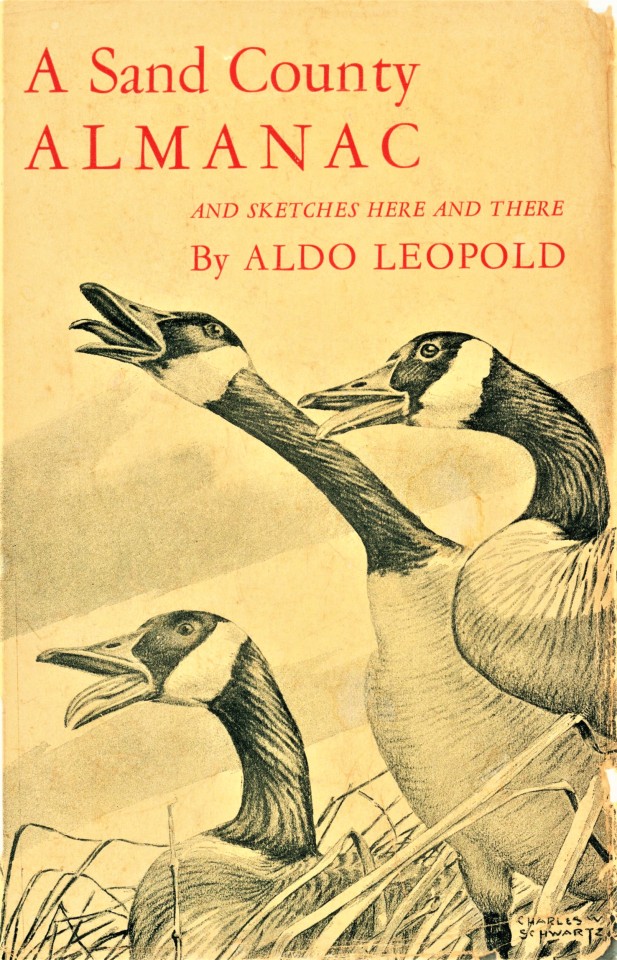
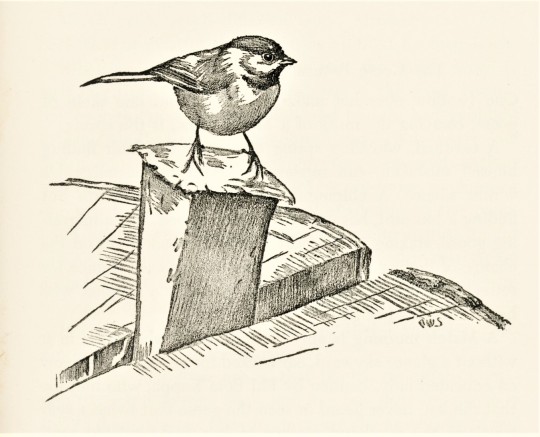





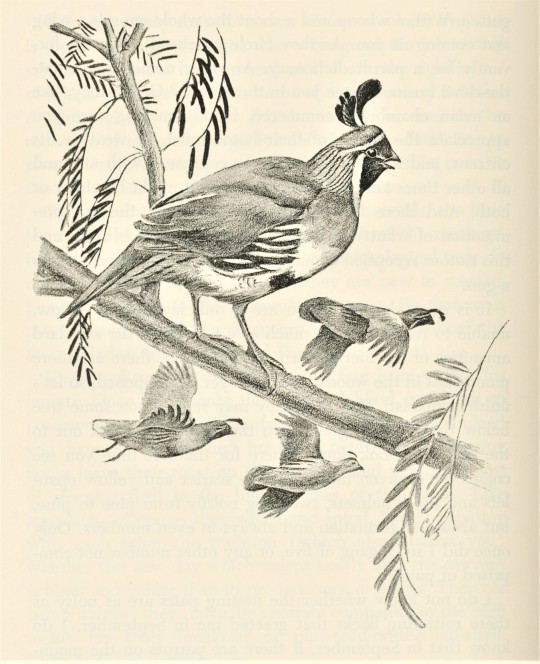
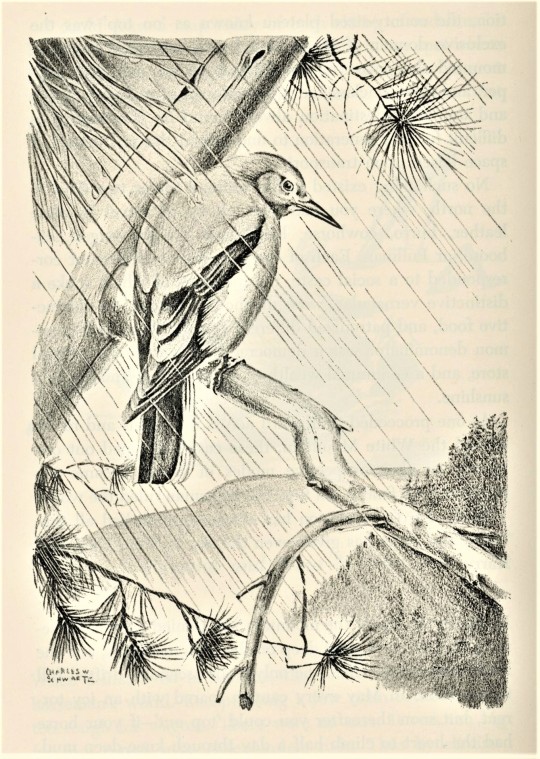
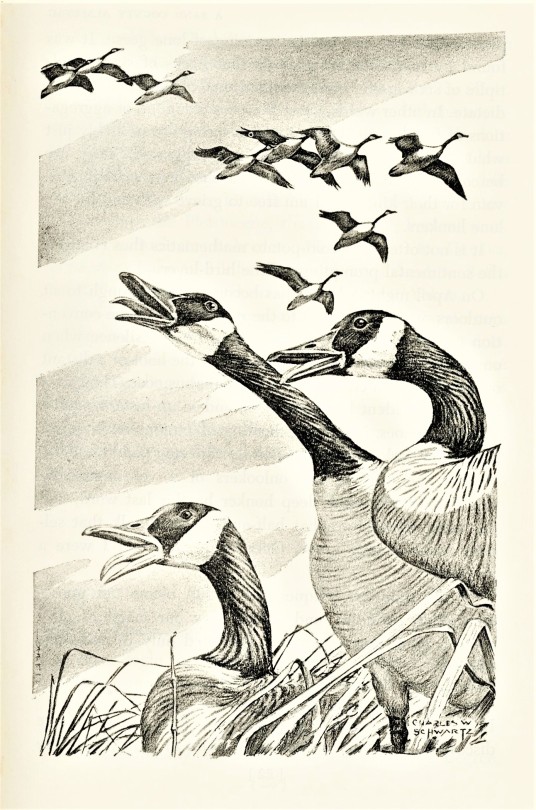
A Sand County Feathursday
One of the most noteworthy books to come out of Wisconsin is A Sand County Almanac by the equally noteworthy Wisconsin naturalist and conservationist Aldo Leopold (1887-1948). Considered a landmark in the American conservation movement, A Sand County Almanac is a collection of essays mainly concerning the land around Leopold’s home in Sauk County, Wisconsin, that advocates the author’s idea of a "land ethic," or a responsible relationship between people and the land they inhabit.
Our copy is a first edition published in New York by Oxford University Press in 1949 with illustrations by the American wildlife artist and fellow conservationist Charles W. Schwartz (1914-1991). The book was published a year after Leopold’s death so he never got to witness its significant impact on the conservation and environmentalist movements.
Schwartz made a special emphasis on depicting the avian inhabitants of Sauk County, and we show a few of those images here that include Canada Geese (Branta canadensis), Black-capped Chickadees (Poecile atricapillus), American Woodcocks (Scolopax minor), and a Mallard (Anas platyrhynchos). A couple of other species shown here are from Leopold’s visits to Mexico and the American southwest, Gambel's Quail (Callipepla gambelii) and Clark’s Nutcracker (Nucifraga columbiana).
The image of the chickadee being annoyed by its newly banded leg has a particularly charming description:
65290 was one of 7 chickadees constituting the ‘class of 1937.’ When he first entered our trap, he showed no visible evidence of genius. Like his classmates, his valor for suet was greater than his discretion. Like his classmates, he bit my finger while being taken out of the trap. When banded and released he fluttered up to a limb, pecked his new aluminum anklet in mild annoyance, and hurried away to catch up with the gang. It is doubtful whether he drew any philosophical deductions from his experience, . . . for he was caught again three times that same winter. . . . By the fifth winter 65290 was the sole survivor of his generation. Signs of genius were still lacking, but of his extraordinary capacity for living, there was now historical proof.
Our copy of A Sand County Almanac is from the collection of another heralded Milwaukee-area environmentalist and activist, Lorrie Otto.
View more Feathursday posts.
#Feathursday#Aldo Leopold#Charles W. Schwartz#A Sand County Almanac#Oxford University Press#Canada Goose#Black-capped Chickadee#American Woodcock#Mallard#Gambel's Quail#Clark's Nutcracker#Lorrie Otto#wildlife art#bird art#birds#birbs!
339 notes
·
View notes
Text
The last word in ignorance is the man who says of an animal or plant: "What good is it?"
Aldo Leopold, A Sand County Almanac
#book quotes#aldo leopold#sand county almanac#nature writing#walking in nature#ecology#conservation#environment#nature#books and libraries
8 notes
·
View notes
Text
The pine's new year begins in May, when the terminal bud becomes 'the candle.' Whoever coined that name for the new growth had subtlety in his soul. 'The candle' sounds like a platitudinous reference to obvious facts: the new shoot is waxy, upright, brittle. But he who lives with pines knows that candle has a deeper meaning, for at its tip burns the eternal flame that lights a path into the future. May after May my pines follow their candles skyward, each headed straight for the zenith, each meaning to get there if only there be years enough before the last trumpet blows. It is a very old pine who at last forgets which of his many candles is most important, and thus flattens his crown against the sky. You may forget, but no pine of your own planting will do sou in your lifetime.
Aldo Leopold. A Sand County Almanac, December: "Pines above the Snow"
15 notes
·
View notes
Text
"Our grandfathers were less well-housed, well-fed, well-clothed than we are. The strivings by which they bettered their lot are also those which deprived us of pigeons. Perhaps we now grieve because we are not sure, in our hearts, that we have gained by the exchange. The gadgets of industry bring us more comforts than the pigeons did, but do they add as much to the glory of the spring?"
- Aldo Leopold, A Sand County Almanac (1949)
#cryyyy#im not normally a quote poster#but i forgot one of my amazing high school teachers gifted me this book#and like specifically highlighted this quote because of a convo we had#while we were reading 1984 in his class#omg i loved him#he was like so old and adorable and everyone loved him#and im having a v emotional day#aldo leopold#quote#quotes#a sand county almanac
154 notes
·
View notes
Text
Currently reading “A Sand County Almanac” by Aldo Leopold. It’s no wonder his works are so well known. His works read poetically and paint vivid pictures while delivering deep themes delivered from the natural world around him. Glad I picked this up when I did.
10 notes
·
View notes
Text
Me reading Aldo leopold’s “a sand county almanac” while he talks about how the economic view of life is destroying both the ecosystem and our enjoyment of things because things have worth outside of money

2 notes
·
View notes
Text
"There are some who can live without wild things and some who can not... Like winds and sunsets, wild things were taken for granted until progress began to do away with them. Now we face the question whether a still higher 'standard of living' is worth its cost in things natural, wild, and free. For us of the minority, the opportunity to see geese is more important than television, and the chance to find a pasque-flower is a right as inalienable as free speech."
Aldo Leopold, 1948. A Sand County Almanac.
29 notes
·
View notes
Text

Aldo Leopold, "The Sand Counties," A Sand County Almanac
313 notes
·
View notes
Text
environmental rhetoric class booklist (updated periodically)
music
Joni Michell, Big Yellow Taxi
poetry
Wendell Berry, The Peace Of Wild Things (link here)
movies
Soylent Green (1973)
essays, articles
Aldo Leopold, Thinking Like A Mountain (pdf link here)
Monsanto Magazine, The Desolate Year (a response to silent spring - pdf here)
The New Silent Spring (newspaper article, link here)
Terry Tempest Williams, The Refuge Of Change (link here)
Christine L. Oravec & James G. Cantrill, Tracking the Elusive Jeremiad: The Rhetorical Character of American Environmental Discourse, from The Symbolic Earth
Robin L. Murray & Joseph K. Heumann, The First Eco-Disaster Film? from Film Quarterly (2006) 59
Winona Laduke, Ricekeepers (link here)
John E. Ikerd, Towards an Economics of Sustainability (link here)
Susan Owens, Is there a meaningful definition of sustainability? in Plant Genetic Resources (link to request full copy here)
fiction books
Edward Abbey, Monkey Wrench Gang
nonfiction books
Aldo Leopold, A Sand County Almanac
Rachel Carson, Silent Spring
ML Lincoln & Diane Sward Rapaport, Wrenched from the Land: Activists Inspired by Edward Abbey
Barry Commoner, The Closing Circle
Alan S. Gross, The Rhetoric of Science
M. Jimmie Killingsworth & Jacqueline S. Palmer, Ecospeak: Rhetoric and Environmental Politics in America
Carl G Herndl & Stuart C Brown, Green Culture: Environmental Rhetoric in Contemporary America
Christine L. Oravec & James G. Cantrill, editors: The Symbolic Earth: Discourse and Our Creation of the Environment
Sidney I. Dobrin & Sean Morey, Ecosee: Image, Rhetoric, Nature
Mark Meister & Phyllis M. Japp, editors: Enviropop: Studies in Environmental Rhetoric and Popular Culture
Noël Sturgeon, Enviromentalism in Popular Culture: Gender, Race, Sexuality, and the Politics of the Natural
Simon Dresner, The Principles of Sustainability
Susan Schrepfer, Nature's Altars: Mountains, Gender, and American Environmentalism
Robin Wall Kimmerer, Braiding Sweetgrass
#long post#birde bookclub#ecospeak & the rhetoric of science are pretty dense rhetorical theory but the rest are pretty easy reading#added braiding sweetgrass
133 notes
·
View notes
Text
I hate the term theyfab I need to get off the internet forever and read aldo leopold’s Sand County Almanac which is Walden for bitches with discerning tastes
7 notes
·
View notes
Text
23 books in 2023
Thank you for the tag @the---hermit !! I did this challenge last year (available here), and finished all the books on my main list just in the nick of time! I’ve been planning this list out since about July of last year, and I’m really excited to get started on it! I’m also doing a few additional lists (ocean-themed, seasonally themed, etc.) that I might post throughout the year. We shall see!
Environmental science/ecology
1) Sand County Almanac by Aldo Leopold (also recommended by friends) (read Dec 2023)
2) The Lost Art of Reading Nature’s Signs: Use Outdoor Clues to Find Your Way, Predict the Weather, Locate Water, Track Animals — And Other Forgotten Skills by Tristan Gooley (read December 2023)
3) Listening to Whales by Alexandra Morton (read April 2023)
4) The World is Blue by Sylvia Earle (read August 2023)
5) Being Salmon Being Human by Martin Lee Mueller (read May 2023)
Classics/Rory Gilmore Reading Challenge
6) Timeline by Michael Crichton (read Jan 2023)
7) The Awakening by Kate Chopin (read Nov 2023)
8) Girl, Interrupted by Susanna Kaysen (read Nov 2023)
9) A Heartbreaking Work of Staggering Genius by Dave Eggers (read Nov 2023)
10) Outlander by Diana Gabaldon (read March 2023)
Reading around the world
11) The Lost City of The Monkey God by Douglas Preston (Honduras) (read Nov 2023)
12) Alone on the Ice: The Greatest Survival Story in the History of Exploration by David Roberts (Antarctica) (read July 2023)
13) Long Walk to Freedom by Nelson Mandela (South Africa) (read Nov 2023)
14) Beyond the Last Oasis by Ted Edwards (Western Sahara) (read December 2023)
15) The Blue Sky by Galsan Tschinag and Katharina Rout (translator) (Mongolia) (read Nov 2023)
Architecture and Design
16) The New Carbon Architecture by Bruce King (read Feb 2023)
17) Design with Life: Biotech Architecture and Resilient Cities by Mitchell Joachim and Maria Aiolova (read Feb 2023)
18) The Alchemy of Architecture: Memories and Insights from Ken Tate by Ken Tate and Duke Tate (read Nov 2023)
19) Houses that Can Save the World by Courtenay Smith and Sean Topham (read Jan 2023)
20) Speculative Everything: Design, Fiction, and Social Dreaming by Anthony Dunne and Fiona Raby (read Dec 2023)
Books recommended by friends
21) The Handmaid’s Tale by Margaret Atwood (Read Jun 2023)
22) O Pioneers! by Willa Cather (Read Dec 2023)
23) Project Hail Mary by Andy Weir (Read Jan 2023)
BONUS
24) Saving Fish from Drowning by Amy Tan
25) Cyrano de Bergerac by Edmond Rostand
26) Defenceless: Gli Ultimi Romantici by Giulia Vola (second year of this on my list bc I think I’ll FINALLY be able to have access to my copy again!! Woohoo!!)
27) Prisoners of Geography by Tim Marshall
28) Backpacked: A Reluctant Trip Across Central America by Catherine Ryan Howard
I really love this challenge, so I want to share it far and wide with the world, BUT I also know not everyone wants to do this, so absolutely no pressure tagging: @contre-qui @daydreaming-optimist @sweetlikehoneysteve @notetaeker @humble-boness @silhouette-of-sarah @willowstea @cheshire-castle-library @deirdredoodle @a-students-lifebuoy @phd-on-fire @amareteur @frithams @carefortheearth @ckmstudies @theskittlemuffin and anyone else who wants to!
#23 books in 2023#bookblr#book recs#books#tagged#tag game#the—-hermit#Cris#friends#mutuals#Studyblr#studyspo#reading#reading recs#book lists
34 notes
·
View notes
Text
To those devoid of imagination a blank place on the map is a useless waste; to others, the most valuable part.
Aldo Leopold, A Sand County Almanac
#book quotes#aldo leopold#sand county almanac#nature writing#ecology#books and libraries#walking in nature#nature quotes#wilderness
8 notes
·
View notes
Text

🏞️ Think Like a Mountain by Aldo Leopold (Penguin Green Ideas Series # 20)
Rating: ⭐️⭐️⭐️/5
Aldo Leopold was a forester and conservationist whose writings on wildlife ecology sowed the seeds of contemporary environmental thought, cumulated in his book “A Sand County Almanac”.
“Think Like a Mountain” contains some of the essays from Leopold’s book, finishing off the Penguin Green Ideas Series. I read the first two books in the series, got overwhelmed by the third, so I decided to start at the end. I had already read “A Sand County Almanac” and this is a great condensed version of the highlights from the book. It felt a little disjointed near the end, not really getting a “finis” feeling at the last sentiments, but I still enjoyed revisiting Leopold’s writing.
My favorite essay was the titular “Thinking Like a Mountain”, which is a very poignant reflection on the war on wolves in the United States.
“Perhaps this is behind Thoreau’s dictum: In wildness is the salvation of the world. Perhaps this is the hidden meaning in the howl of the wolf, long known among mountains, but seldom perceived by men.”
#godzilla reads#think like a mountain#aldo leopold#book review#penguin green ideas#penguin books#nature books#blue books#books and dogs#my pets#booklr#bookworm#reading#bookish#book blog
5 notes
·
View notes
Text
Ten Books To Know Me
Rules: 10 (non-ancient) books for people to get to know you better, or that you just really like.
Thanks for the tag @littledreamling and @mathomhouse-e!!
I'm taking non-ancient literally, you will be getting literature from the 19th century lmao. In no particular order:
20,000 Leagues Under the Sea by Jules Verne
This book was my hook into the sci-fi genre! It's such a fun adventure to live in the world underwater in the Nautilus! I still have the annotated version my parents got me when I was around 9 or 10 with a very beat-up, well-loved dust jacket.
2. Slaughterhouse Five by Kurt Vonnegut
Vonnegut's style is so influential. I adore the non-linearity of the story, how Billy gets "unstuck in time" and we see snippets of his past and his future. Of course the anti-war message is near and dear to my heart and the perspective of people who have been to war is so critical to hear. Vonnegut also has a special place in my heart as someone who taught the Iowa Writers' Workshop because that program is something my home state produces that I can be very proud of.
3. Silent Spring by Rachel Carson
C'mon, I'm an ecologist! I have a degree in environmental science! This is an obvious choice for someone who cares about the environment, as it demonstrated the dangers of DDT to the public. Carson is a personal hero of mine as she essentially kickstarted the environmental movement and became one of the best science communicators in the United States. Her writing is simple, clear, and easy to understand even if you have no background in biology and chemistry. An amazing way to make people see what we are doing to our Earth.
4. Welcome to Subbirdia by John Marzluff
Woohoo! First bird book on the list! I read this in my first year seminar in college and it opened my eyes to how cool urban ecology is. I learned so much about how inhospitable suburbia can be for wildlife and what we can do to invite them back to where we live, so we can actually live beside native plants, animals, and other organisms. It's a great entry-level book about birds, the biodiversity crisis, and urban ecology.
5. The Hitchhiker's Guide to the Galaxy by Douglas Adams
I love the weird, the silly, and the bizarre. Hitchhiker's Guide has had such an impact on my sense of humor and outlook on life. I'm gonna use this space to recommend the entire trilogy in five parts to you.
6. American Gods by Neil Gaiman
Are we shocked that a Neil book landed on here? I read this in 2021 when I was working just outside the Boundary Waters in northern Minnesota. It actually made me a friend who introduced me to Good Omens and then Discworld. I miss him dearly. Anyways, what a fantastic world that I really felt quite at home in as a Midwesterner. Sam Black Crow is one of my favorite characters of all time.
7. Leaves of Grass by Walt Whitman
One of my earliest beloved poets. Whitman does so much with rhythm and sound in his poems; it's no surprise he's recognized as one of the American greats. I love his use of natural imagery and the way he explores the connections between people. And the powerful homoeroticism.
8. What Do We Know by Mary Oliver
Another poet, and a tumblr favorite at that! Oliver's poetry really speaks to my soul as someone who takes in the wonders all around us, big and small. Her prose poems are truly skilled, and if you read any of them I really adore At Blackwater Pond to get a taste.
9. Sand County Almanac by Aldo Leopold
I am so, so soft-hearted for the ecology of the Midwest and for the people who take the time to look and listen and learn from all the living beings that surround us. I've shared a quote from this book before but it really gets to the crux of what is so beautiful about the essays and natural history within:
"It is fortunate, perhaps, that no matter how intently one studies the hundred little dramas of the woods and meadows, one can never learn all of the salient facts about any one of them."
10. The Sibley Guide to Birds, 2nd Edition by David Allen Sibley
Last but not least, my favorite bird guide! This thing has been everywhere with me. I'm 95% sure that some of the pages have my blood on them. It's certainly got dirt all over it. This book is my bible. I take it wherever I go when I lead birding trips and when I'm somewhere that has unfamiliar birds. It is the best field guide for North American birds in my opinion.
Not sure who hasn't done this yet! Obviously no pressure to do it <3
@altair214 @lenreli @galacticstingray @pintobordeaux
7 notes
·
View notes
Text
I let this dude borrow my copy of Aldo Leopold's A Sand County Almanac back in AUGUST and now every time I try and hang out with him again he cancels or something gets in the way of him coming.... please I just want my book back.
#sand county almanac is one of my fav books :(( i dont wanna have to buy a new copy#he also has my copy of Green Halo by Erazim Kohák but i dont care abt that one as much#though i would still like it back#txt
13 notes
·
View notes